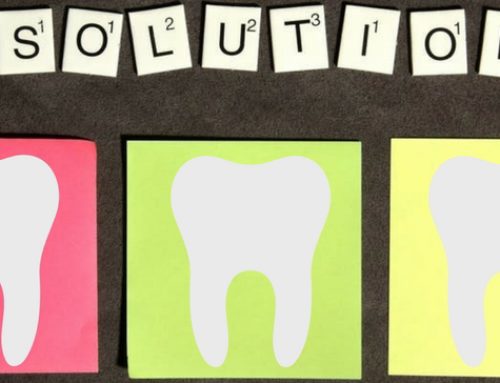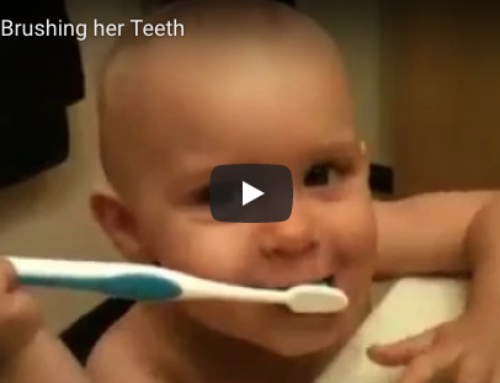 One subject that comes up frequently when I talk with my patients is that of tooth whitening. Everybody wants whiter, brighter teeth, and while in most cases this is not an unrealistic request, it is not as simple as it seems. Considerations regarding whitening include the type of stain on the teeth, fillings and or other restorations that may be present, gum recession and any history of sensitive teeth that the patient may have.
One subject that comes up frequently when I talk with my patients is that of tooth whitening. Everybody wants whiter, brighter teeth, and while in most cases this is not an unrealistic request, it is not as simple as it seems. Considerations regarding whitening include the type of stain on the teeth, fillings and or other restorations that may be present, gum recession and any history of sensitive teeth that the patient may have.
What Causes the Staining and Discoloration on My Teeth?
Broadly speaking, there are five major culprits when it comes to staining of your teeth.
Food and drink, coffee, tea, red wine – These and a myriad of other things that we eat or drink contain pigments that attach to the enamel of the teeth causing stains.
Age – As time goes by the enamel on your teeth becomes thinner letting the yellowish dentin beneath show through. The pulp chamber, an inner part of the tooth, can also shrink some allowing the tooth to reflect less light resulting in a tooth that does not look as bright.
Tobacco use – In addition to all of the other bad stuff that tobacco does to your body, the tar and nicotine in tobacco cause considerable staining of the teeth.
Trauma to the tooth – If you bump your tooth just right it can cause bleeding within the pulp of the tooth. Just like with a bruise on your skin a small amount of blood escapes into the surrounding tissue and as the pigments in the blood break down It leads to the familiar black and blue stain. However, in teeth, these pigments remain indefinitely as they are not carried away by your circulation as they would be in a bruise on your skin. Trauma can also cause the pulp of the tooth to calcify resulting in a tooth that is much deeper in color.
Medications – Certain medications can also cause discoloration of the teeth. Young children who are exposed to antibiotics like tetracycline and doxycycline may have discoloration in their adult teeth. Additionally, some high blood pressure medications, antihistamines, and antipsychotic medications can cause darkening of the teeth.
How does tooth whitening work?
Most tooth whitening agents are peroxides, usually either hydrogen peroxide or carbamide peroxide. These agents break large heavily bonded molecules that compose stains into smaller molecules with fewer chemical bonds that absorb less light resulting it brighter teeth. The type of whitening agent is determined by your dentist based on the degree of staining, the technique being used and factors relating to the patients medical and dental conditions.
 OK, so you have some staining on your teeth. What are we gonna do about it?
OK, so you have some staining on your teeth. What are we gonna do about it?
Tooth whitening systems can be divided into four categories.
(1) Professionally applied in the dental office.
In my office, we use the “zoom“ system. We have found this to be a very effective and dependable technique. “Zooming” is usually a two-appointment process. At the first appointment, the shade of your teeth is recorded, the details of the whitening process are explained, and impressions are taken so that we can make a set of take-home whitening trays for use in periodic maintenance treatments and for the delivery of desensitizing agents should the need arise in the immediate post whitening period. (Despite the precautions we have seen very little in the way of post-whitening sensitivity using the in office “zoom” whitening system.) It’s at the second appointment where the magic happens. A licensed dental professional will isolate your teeth and gums, apply the bleaching agent and direct a special light at your teeth for 20 minutes. This process is usually repeated three times. The patient’s teeth are noticeably whiter in almost all cases following the in-office whitening appointment.
(2) Dentist prescribed/dispensed (patient home use) whitening systems.
This technique utilizes custom-made whitening trays to be used with the prescribed peroxide gel either overnight or for a shorter period of time during the day depending on the type of whitening gel prescribed. The whitening trays are made of a thin, soft, clear plastic which is vacu-formed over a model of your teeth. These trays are quite comfortable and, in most cases, can be worn overnight without causing problems with sleep, This technique gives excellent results usually after one to 3 weeks of daily use in patients with average staining of their teeth, Some types of discoloration can take longer to achieve an acceptable result.
(3) Tooth whitening agents purchased over-the-counter.
There are a wide array of tooth whitening products available over the counter at your drugstore. These include paint on gel’s, strip delivered materials, and whitening toothpaste. In the United States, tooth whitening products are marketed according to US “cosmetic“ regulations. This classification minimizes the fact that tooth whitening materials, namely gels and strip delivered materials, contain peroxides which may have harmful effects on the teeth and the oral mucosa if not used properly.
(4) Tooth bleaching in non-dental settings such as spas, mall storefronts, and kiosks, etc.
Remember that these products are being applied by personnel whom are not educated on the use of disease screening or diagnostic tests and are not licensed or qualified to provide dental examinations. The staff of non-dental facilities are not licensed and the degree of their training in infection control and other important emergency and safety procedures is unknown.
Give us a call if you’d like to discuss your whitening options!





